Hello, YA fans!
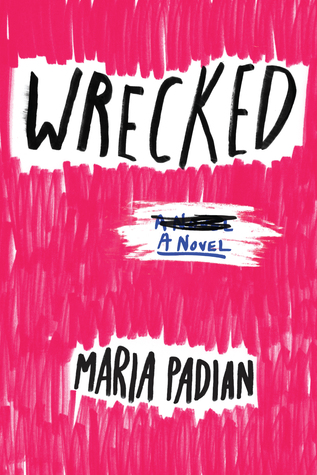 This week’s newsletter is sponsored by Wrecked by Maria Padian.
This week’s newsletter is sponsored by Wrecked by Maria Padian.
On the same night college freshman Haley sustains a career-ending concussion on the soccer field, her bookish roommate Jenny arrives home shell-shocked from a wild party. The next morning, on the other side of campus, Jordan brags to his housemate, Richard, about the cute freshman he hooked up with. When Jenny formally accuses Jordan of rape, gossip spreads like wildfire through the campus. Wrecked by Maria Padian, a gut-wrenching, powerful, kaleidoscopic account of a sexual assault on campus, is a must-read.
I promised in the last newsletter that there would be an excellent interview in this week’s edition. At the time, I hadn’t yet seen the answers and now that I have, all I can say is, you’re in for a treat, YA fans!
September 15 kicked off a month-long celebration of Hispanic Heritage, and I could think of no better way to talk about this than to interview an up-and-coming rising star in YA, Anna-Marie McLemore. Anna-Marie is a queer Latina whose first book The Weight of Feathers was short listed for the William C. Morris Debut Award and whose second book, the just-released When The Moon Was Ours, is long listed for the National Book Award for Young People’s Literature.
Before diving in, I’ll take a moment to plug an older post I wrote on my personal blog: A YA reading list to Hispanic Heritage Month. It’s a little wonky in formatting, but for those of you seeking a great book by a Hispanic author or who want more background on the celebration itself (i.e., Why is it mid-September through mid-October? Who does it celebrate?), here you go.
And now, let’s talk with Anna-Marie!
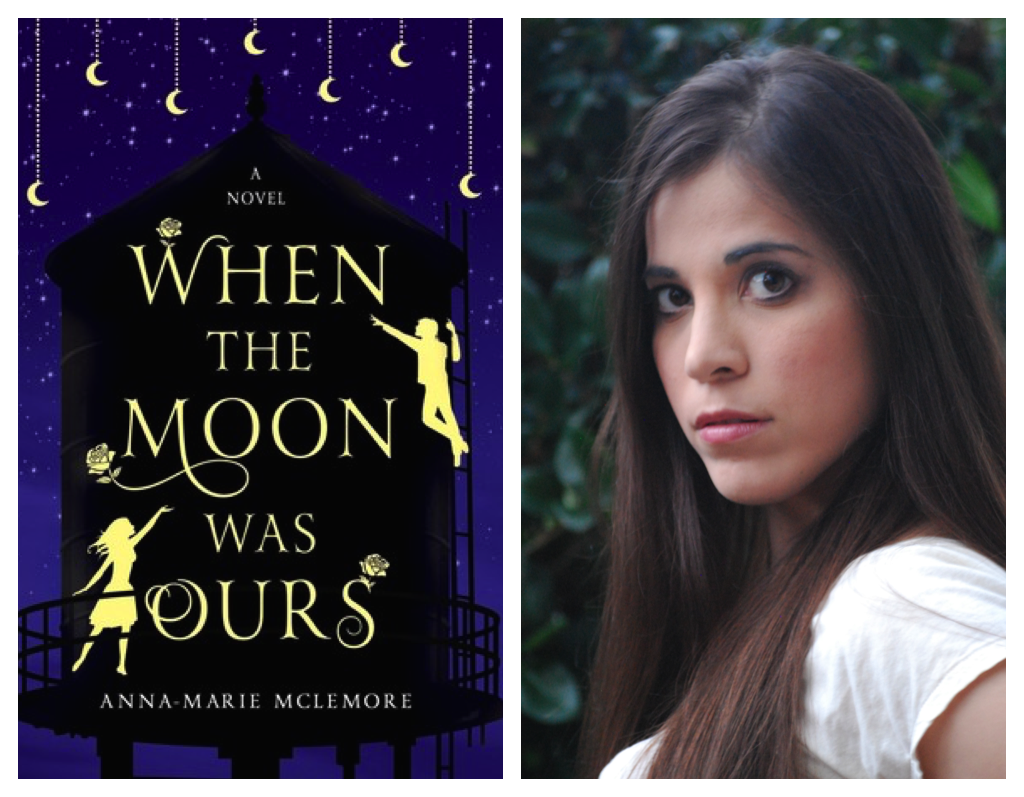
Before we dive into talking about a host of other things, give us the pitch for THE WEIGHT OF FEATHERS, as well as the pitch for your latest book, WHEN THE MOON WAS OURS!
The Weight of Feathers is the love story of two teens from rival families of traveling shows, the Mexican-American Palomas, who perform as mermaids, and the Romani Corbeaus, who are descended from a long line of French tightrope walkers.
When the Moon Was Ours tells the story of Sam, a transgender boy known for painting moon lamps and hanging them in the trees throughout his small town, and Miel, a Latina girl who grows roses from her wrist. Miel and Sam have been friends since the night Miel appeared from a water tower as a child; now, years later, they find themselves up against four sisters rumored to be witches.
You openly identify as a queer Latina writer — can you talk a bit as to why stating your identity is important to you as a writer and how you translate those experiences into your own stories?
Claiming my identity has been important both for my own spirit—for taking pride in my intersecting identities and my communities—and as part of being visible for and within my communities. I’m a light-skinned, dark-haired and dark-eyed Latina, and often people see me and understand me as “other”—not white or “not quite white”—but don’t know what I am. While we never owe anyone an answer to the question “What are you?” I want to be a visible as part of the Latinx community, especially since I’m queer. And since we’re talking about declaring queer identity, I am extremely straight-passing; when I’m not out with the Transboy, I’m usually assumed to be straight. While fellow members of the LGBTQ community often flag me as their own, straight, cis people usually don’t. They sometimes get the sense that I’m a little different, but that’s often as much part of being of-color as being queer. So claiming my queerness is in part about pride, in part about visibility as a queer woman of color, and in part about letting go of some of my straight-passing privilege in a way that I hope helps show the range and diversity in our community.
Do you find yourself feeling extra pressure to “get it right?” How do you balance the need to tell a story with the pain points that come from being a minority voice in the YA world? Do you feel there are more expectations for you as a queer female writer of color than writers who don’t identify as a minority or who don’t choose to be open about their identities?
My hope is that all authors, no matter their identities, feel a responsibility to their readers and to themselves to “get it right.” But I do think that when there are fewer stories by any one kind of marginalized voice, it’s hard for authors not to feel the added pressure of what role their stories will or should play. An author and blogger who knows YA titles as thoroughly as anyone else I can think of recently told me that When the Moon Was Ours is one of the only titles she has on hand to recommend that has both a trans* main character and an interracial romance between two main characters of color. So that’s an example of how it’s a tremendous honor to me when anyone recommends my books, but I do feel the weight of that responsibility. The hope, of course, is that, no matter what kind of book, no matter what kind of main character a reader asks for, there will eventually be many titles to recommend. I think that’s one of the things we hope for as we talk about diversity and inclusion in literature. We look toward the hope of many mirrors. However long that dream of many mirrors takes, I want to do the best I can as a queer female writer of color, both in the stories I tell and in the ways I engage in the community.
Who and/or what have been some of your influences as a queer writer of color?
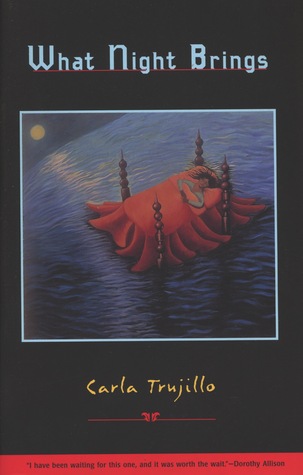 The first novel by a queer Latina author I can remember reading is Carla Trujillo’s What Night Brings. That book to me had the draw of being both a mirror book and a window book. A mirror in that so much about narrator Marci Cruz’s culture was familiar to me. A window in that this young woman is looking at feminine women with the sort of gaze we tend to attribute to boys and men, like what we see in The Virgin Suicides. And that was such a strange and disconcerting and wonderful moment of “Oh. Do queer women look at us”—and by us I mean feminine-presenting queer women, femmes, the community I was only just starting to understand—“like that? Do queer women look at us like men look at us?” That made queer attraction real to me in a way it wasn’t before. I had never seen the attraction of a queer Latina woman depicted on the page before.
The first novel by a queer Latina author I can remember reading is Carla Trujillo’s What Night Brings. That book to me had the draw of being both a mirror book and a window book. A mirror in that so much about narrator Marci Cruz’s culture was familiar to me. A window in that this young woman is looking at feminine women with the sort of gaze we tend to attribute to boys and men, like what we see in The Virgin Suicides. And that was such a strange and disconcerting and wonderful moment of “Oh. Do queer women look at us”—and by us I mean feminine-presenting queer women, femmes, the community I was only just starting to understand—“like that? Do queer women look at us like men look at us?” That made queer attraction real to me in a way it wasn’t before. I had never seen the attraction of a queer Latina woman depicted on the page before.
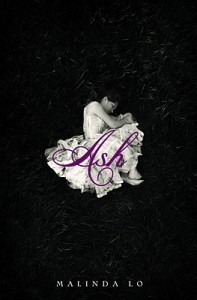 When it comes to YA, Malinda Lo was the author who drew me into the idea that there was room for the stories of queer women of color. Ash transfixed me, and every novel she’s written after has given me another breathless moment of “Oh. We (meaning queer women of color) can write those stories. We can write those genres. There is room for us, and if there’s not, we will make room.” She’s an author who has done so much to make that room, to open what so many queer women of color think of as stories that can belong to us, both as readers and as writers.
When it comes to YA, Malinda Lo was the author who drew me into the idea that there was room for the stories of queer women of color. Ash transfixed me, and every novel she’s written after has given me another breathless moment of “Oh. We (meaning queer women of color) can write those stories. We can write those genres. There is room for us, and if there’s not, we will make room.” She’s an author who has done so much to make that room, to open what so many queer women of color think of as stories that can belong to us, both as readers and as writers.
And in terms of queer authors who wrote in Spanish, Lorca has been, and continues to be, a tremendous influence. His poetry and his plays were absolutely transformative to me. They had commonalities with a culture I knew, and they had a kind of passion that was even more meaningful to me when I understood his perspective as a gay man. To read such beautiful stories and images, and to know they had come from a heart that loved in a way that his society rejected and ultimately killed, was heartbreaking, haunting, and life-changing. He is one of my most deeply held reference points for why magical realism is so important to me. You feel it in his words and his characters, that meeting of oppression and transcendence, of being broken down and still finding the beautiful.
Your two books pull threads through them that readers might identify — Romeo & Juliet comes through in THE WEIGHT OF FEATHERS while the tale of La Llorona weaves its way a bit through WHEN THE MOON WAS OURS. Can you talk a bit about the power of stories and how they influence your own writing?
I grew up in a family that loves and values stories. Some of those stories, like the legend of la llorona, belong to our cultures, and they hold places in our hearts that are both harrowing and hopeful. Others, like Romeo & Juliet, have largely been claimed by white narratives, this despite the fact that so many cultures have their own stories with similar themes. My family taught me that sometimes, if we want stories of our own, we have to claim them, we have to create them, we have to make them ours.
Your books are readily identifiable as “magical realism.” This term has gained a lot of use in the YA world over the last couple of years to describe a wide swath of novels. But “magical realism” has significant cultural associations and meanings that separate it from fantasy reads. Can you talk a bit about what magical realism is, why you write it, and what YA books you see fitting into it?
Magical realism is a literary and cultural language. I hesitate to give a brief, one-sentence definition of magical realism for the same reasons I hesitate to give a short definition of what it means to be Latina. Magical realism is more than seeing the extraordinary in the ordinary. In a culture of oppression, seeing the magical in the midst of the tragic, the unjust, the heartbreaking is a way of survival, for people, for communities, for cultures. We must find our magic where it lives, or we will lose it. Our spirits depend on not overlooking that which might be dismissed or ignored. When the moon speaks in Lorca’s Blood Wedding, I take a deeper breath not because this seems impossible, but because the moon’s words stay with me. That’s really I think why I write it, it’s how I express what I know, that the world is more brutal than so many people believe, and more beautiful they than imagine.
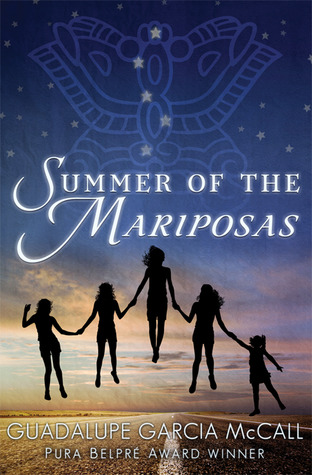 One of the most classically depicted moments of magical realism I’ve ever found in YA is in Guadalupe Garcia McCall’s Summer of the Mariposas, when the five sisters at the heart of the story speak to la llorona. La llorona is a legendary figure in Mexican-American culture; in my community, we all hear her story growing up. But these sisters speak to her, and she speaks to them, as though they’re simply relatives who haven’t seen each other in years.
One of the most classically depicted moments of magical realism I’ve ever found in YA is in Guadalupe Garcia McCall’s Summer of the Mariposas, when the five sisters at the heart of the story speak to la llorona. La llorona is a legendary figure in Mexican-American culture; in my community, we all hear her story growing up. But these sisters speak to her, and she speaks to them, as though they’re simply relatives who haven’t seen each other in years.
I also must mention Laura Ruby’s Bone Gap and Nova Ren Suma’s Imaginary Girls, because Laura and Nova are two of the YA authors I admire most. I go back to their books often. I should mention that both Laura and Nova have called their books something other than magical realism; Laura calls Bone Gap a Midwestern fairy tale, which I love. Their books have hints of magical realism blended with elements that are uniquely their own.
Though Hispanic Heritage Month is coming to an end, reading and discussing diverse books is something that we’re all interested in. What have been some of your favorite YA and/or YA crossover reads written by those with a Hispanic and/or Latinx heritage?
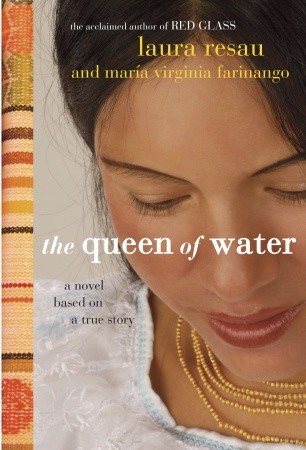 Maria Virginia Farinango and Laura Resau’s The Queen of Water is the story of a young Ecuadorian girl fighting to have a chance at an education, independence, and the life she imagines; Laura Resau, the co-author who Farinango trusted to help tell her story, has also written many books, and she’s an example I constantly cite as a white author who respectfully and authentically depicts Latinx culture. Benjamin Alire Sáenz’s Aristotle and Dante Discover the Secrets of the Universe has two characters I just loved spending time with; their relationship is both fun and poignant, and the way it unfolds is gradual and powerful.
Maria Virginia Farinango and Laura Resau’s The Queen of Water is the story of a young Ecuadorian girl fighting to have a chance at an education, independence, and the life she imagines; Laura Resau, the co-author who Farinango trusted to help tell her story, has also written many books, and she’s an example I constantly cite as a white author who respectfully and authentically depicts Latinx culture. Benjamin Alire Sáenz’s Aristotle and Dante Discover the Secrets of the Universe has two characters I just loved spending time with; their relationship is both fun and poignant, and the way it unfolds is gradual and powerful.
One of my favorite magical realism stories, Laura Esquivel’s Like Water for Chocolate, sets traditional magical realism against the landscape of familial closeness and conflict. Not technically YA, but I read it as a teen, and it was one of the books that made me a reader. It shares themes of becoming your own and making your own choices with many of my favorite YA books.
The Alchemist is a classic by Brazilian author Paulo Coelho, and it also has themes of making your own life that I think would resonant with readers who love YA. Right now I’m reading The House of Impossible Loves by Cristina López Barrio, and I am loving it so far; at its core is the question of how much daughters want to be like or different from their mothers. And thanks to more diverse books reaching shelves every year, my TBR list is growing, including my TBR of specifically Latinx voices.
____________________
A big, big thank you to Anna-Marie for this wonderful conversation and YA readers, hopefully you found even more books to add to your towering piles! And if you haven’t already read her books, make sure they’re on your piles because both are wonderful, lush stories that exemplify all of the best parts of YA and why YA is such a rich category of books.
Enjoy your reading and we’ll see you back in two weeks!